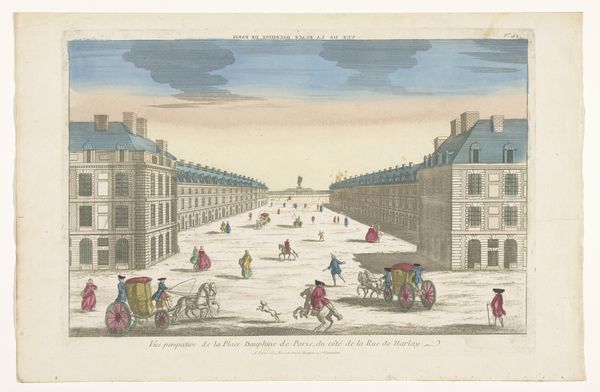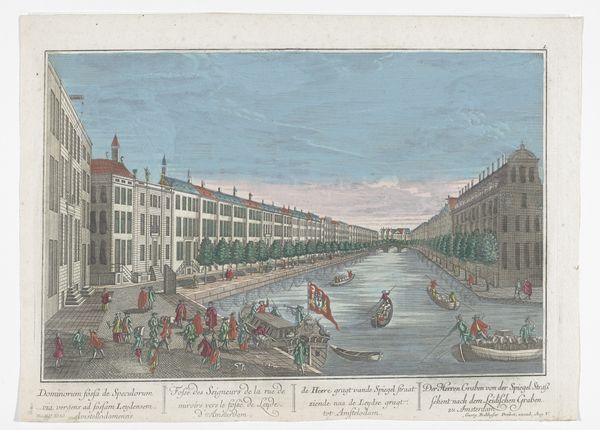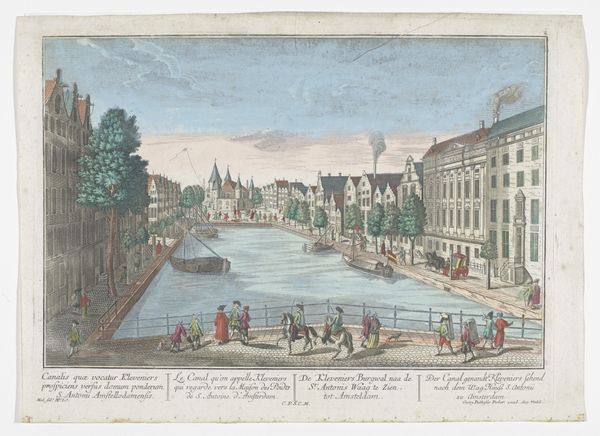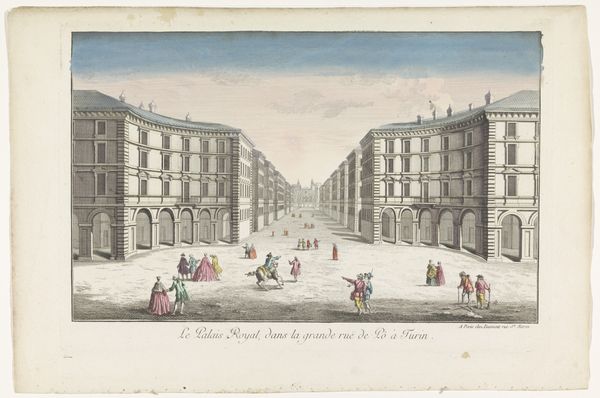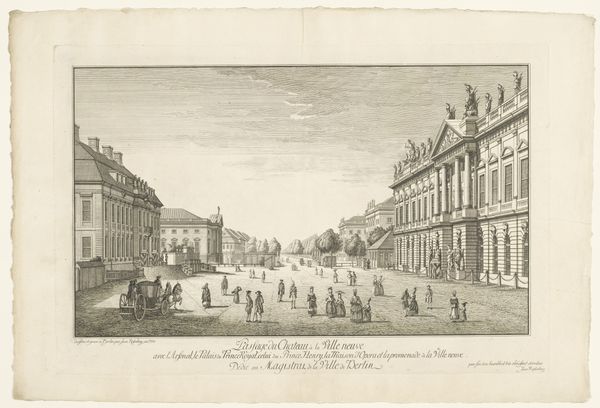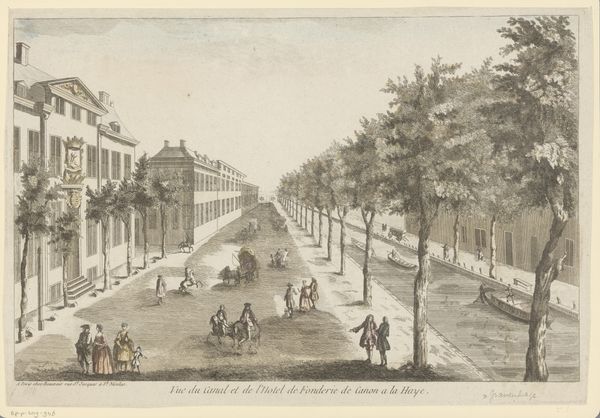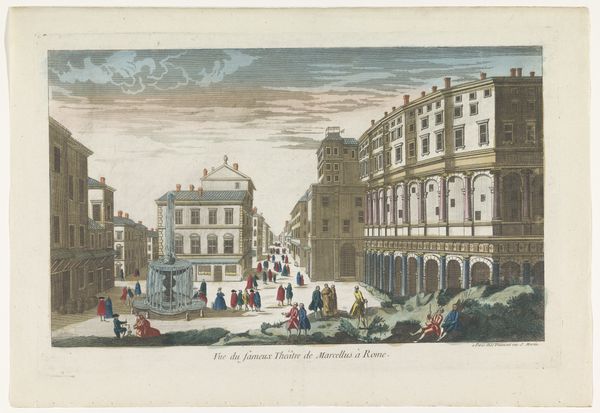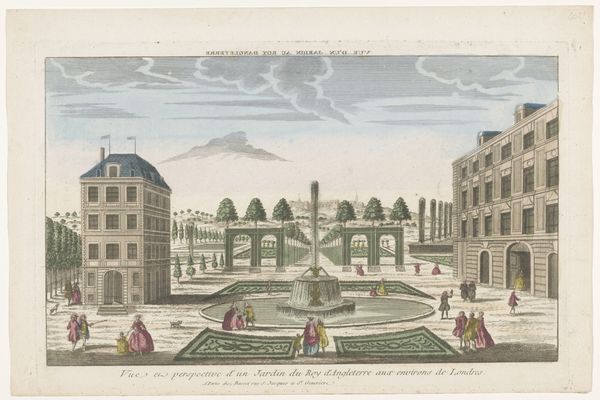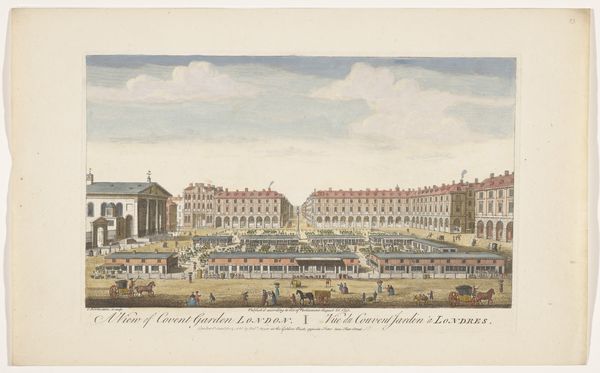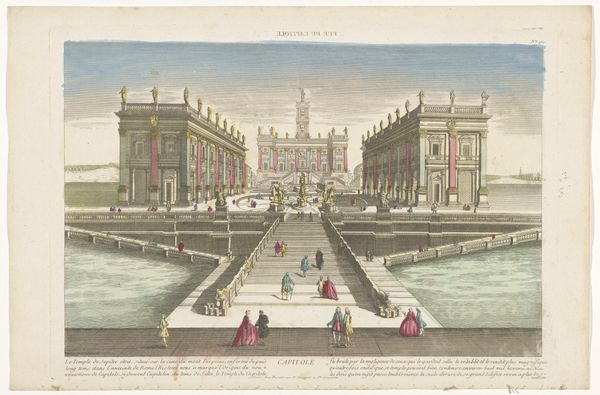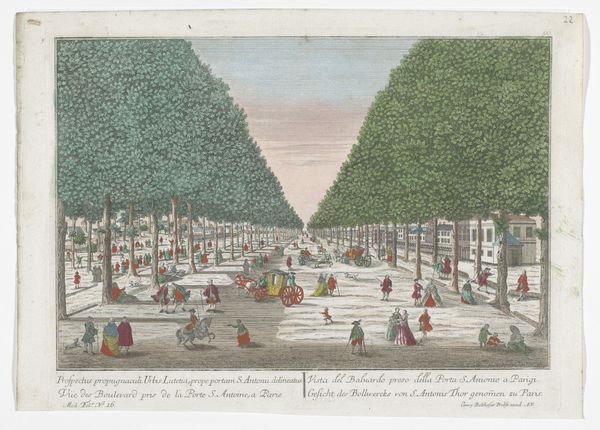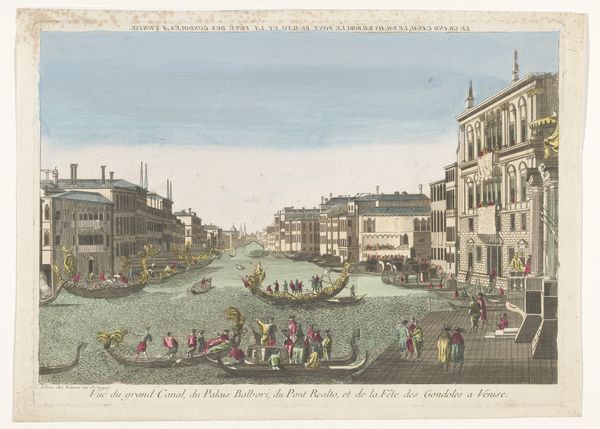
Dimensions: height 317 mm, width 421 mm
Copyright: Rijks Museum: Open Domain
Editor: Here we have "View of a Promenade in Marseille" by Georg Balthasar Probst, sometime between 1742 and 1801. It’s an etching with watercolor, a really pleasant cityscape. I'm struck by how orderly it feels, yet there's still a sense of vibrant, everyday life happening within the carefully planned architecture. How do you interpret this work? Curator: It’s more than just a pretty scene, isn't it? Consider the historical context. This promenade embodies Enlightenment ideals: order, reason, and control over nature. But who benefited from this order? Editor: Good point! It seems very much designed for a certain class of people. Curator: Precisely. These planned spaces often served to separate and regulate society, creating exclusive zones for the wealthy and powerful, effectively excluding those deemed undesirable. Do you notice anything in the artwork that reinforces that division? Editor: The figures are all dressed in finery and engaged in leisurely strolls. It is difficult to see any type of labor, only consumers and passers by in elite society. Curator: Exactly. Probst's work reveals how urban planning during this era not only beautified cities but also solidified social hierarchies. It's a subtle but powerful commentary on class, access, and the very definition of 'public' space. Editor: It’s eye-opening to think about city planning as a form of social engineering, creating not just physical spaces but also influencing the lives of those who inhabit them. Curator: It encourages us to question the intentions behind these beautified and ordered environments. Thanks to the proliferation of print media, ordinary people may have been deceived by what they viewed. Editor: Definitely gives a different perspective. Thank you.
Comments
No comments
Be the first to comment and join the conversation on the ultimate creative platform.
